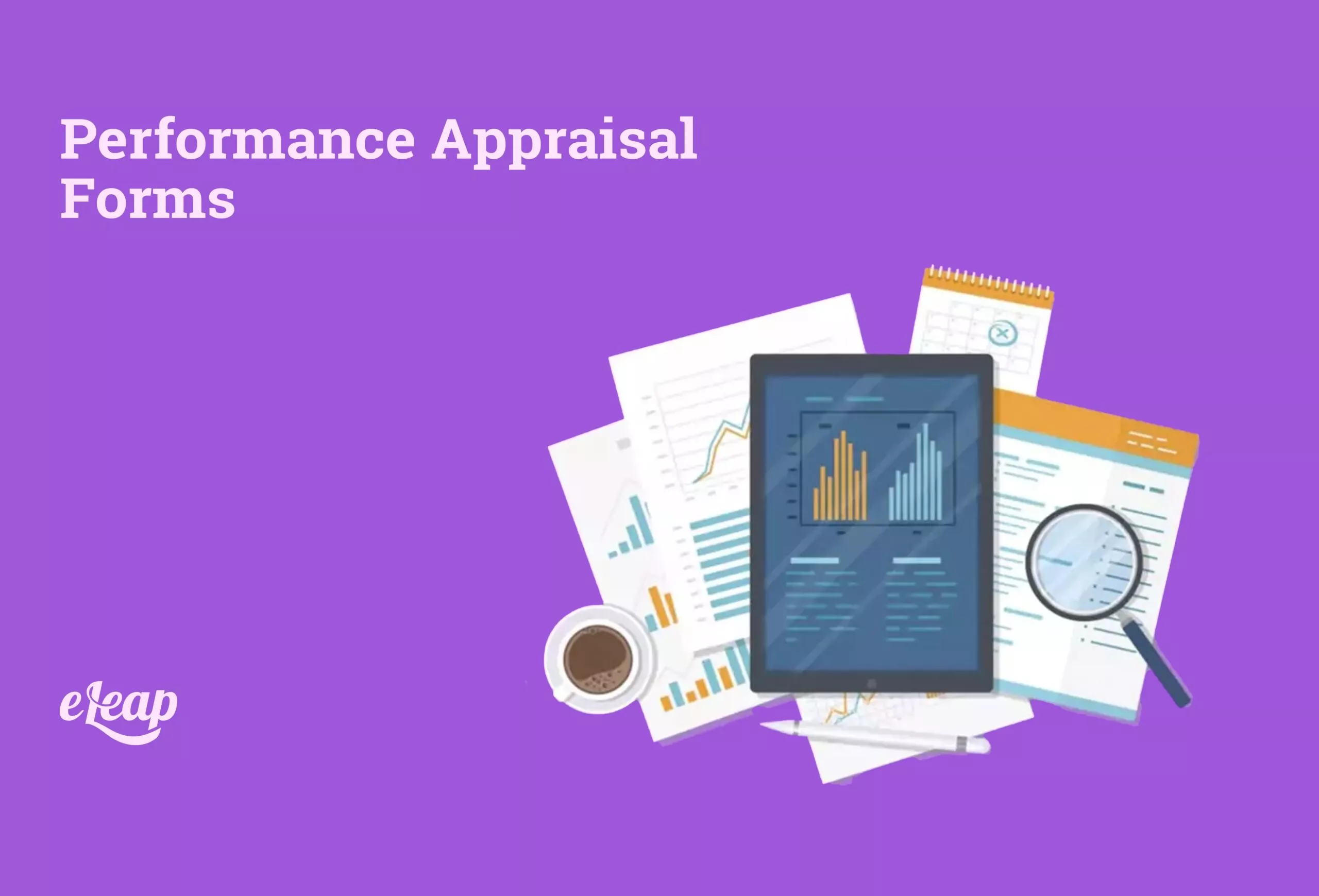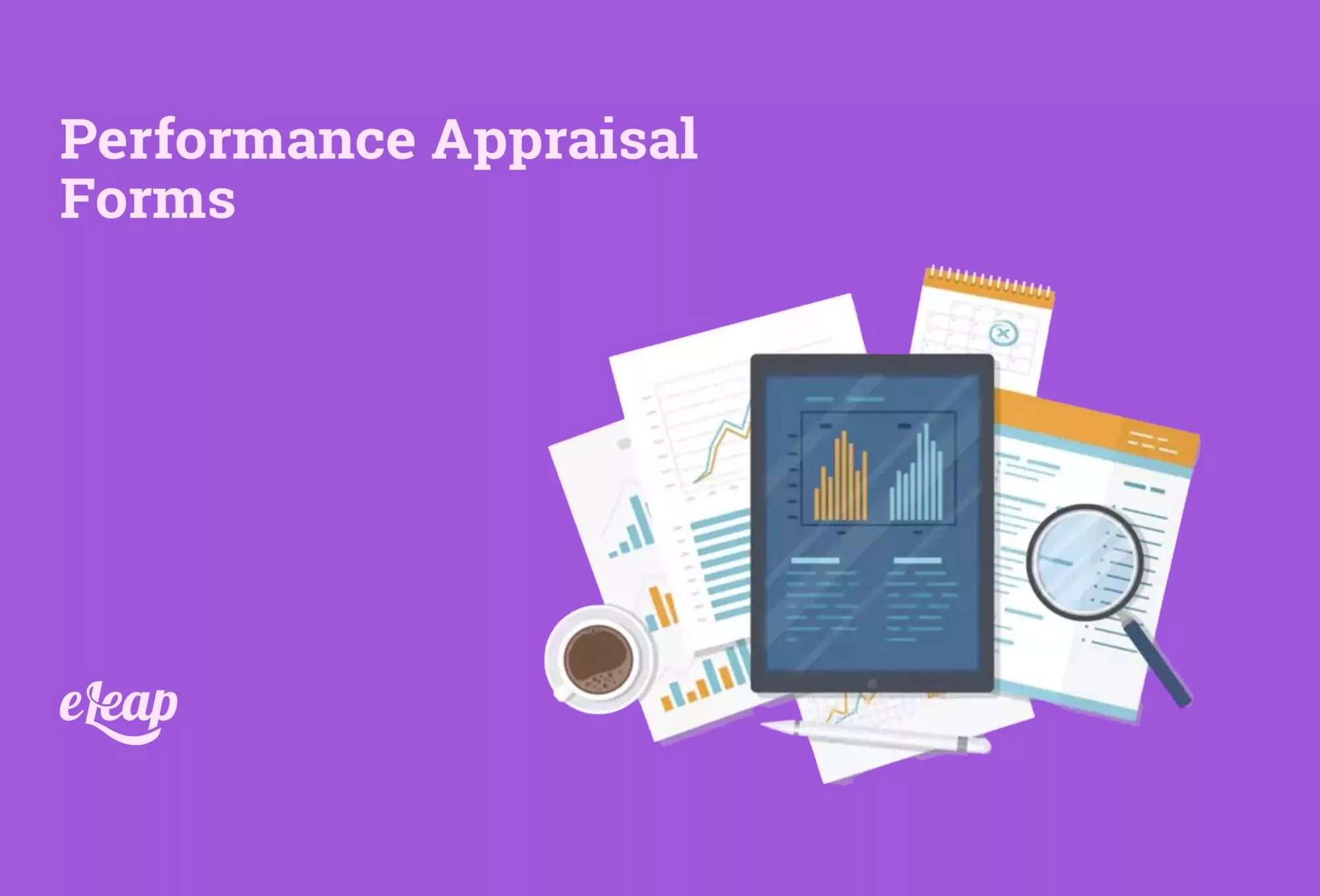Performance Appraisal Forms
Build the Performance Appraisal Your Business Needs

Performance appraisals are a vital tool for gauging an employee’s performance and provide a platform to give feedback on their past, present, and future expectations. Building an effective performance appraisal form is essential for an organization’s performance management program. This article is intended to offer a step-by-step guide to the critical points of a standard performance appraisal form and provide a few guidelines for developing a powerful performance management tool. Download the ebook “The Skeptics Guide to Performance Management“ and get started on improving your performance management process.

What to Include
It’s an organization’s choice of what to include in a performance appraisal. However, there are a few standard, typical elements to consider as you build your company’s performance assessment tools. First, include some demographic information, including the employee’s name, employee number, and a general overview of their job’s responsibilities and goals since their last appraisal.
Adding a standardized rating scale, such as a five-point Likert scale, ensures that employees understand how they are being assessed, what the expectations are, and how they are measuring up. Competency and role-based assessments should always be included in a performance appraisal to ensure that you’re appraising behavior and role-specific projects and issues in their work.
Self-evaluation that allows an employee to engage with the process and share their own insight into the process is essential. Furthermore, goals that allow employees and managers to talk about where they see their future in the company should also be included.
The final consideration that you should include in a performance appraisal is an employee development plan. Build career learning and development pathways that allow an employee to engage both in their past behavior, as it relates to their performance, as well as what the future might hold for their career and their performance.
Implementing these standards into your appraisal form will make for a useful and user-friendly tool. Additional guidelines on the development of these elements can help guide the development of your performance appraisal form. Let’s take a look.
What Makes an Effective Performance Appraisal Tool?
The answer to this question is based entirely on what your business needs. However, there are some general guidelines to ensure your forms are user-friendly. First, find inspiration. When developing a performance appraisal form, do your homework. Find similar evaluation forms from like-minded organizations or companies with similar ideas on what makes good performance management. Review these forms for elements that suit your needs. Consider their approach and work on what makes their methods effective in your forms. Try eLeaP free for 30 days and see how truly effective performance appraisal is done.
Make sure that your form is simple to use. Your performance appraisal tool should be simple to follow and use. Provide clear directions and examples so managers and supervisors understand what is needed in each section of the form. Forms should follow a logical and sequential order. Document design is critical when making a performance appraisal. Avoid jumping around or asking for cross-references. Everything should be included in the form.
Job Descriptions
Performance appraisals should always be tied to the employee’s job description. Adding their job description to the performance appraisal process is a good idea. Checking that a well-worded and detailed job description is added to the appraisal goes a long way toward setting clear expectations for the employee and making the performance review easier and more streamlined for the supervisor or manager involved.
Adding job descriptions helps root performance appraisals in the employee’s competency. Competency-based appraisals clearly connect the employee’s performance to the company’s goals, objectives, and outcomes. A sound appraisal form should be built based on the organization’s overall mission. Individual and team competencies should be rated against the organization’s values. Make sure to use the organizational jargon when appropriate and refer to the company’s goals throughout the appraisal.
Specificity
Although most jobs have similar core values, remember to work in role-based measures. In other words, make the appraisal based on job roles. Distinguish between supervisors and non-supervisory by providing clear definitions of each role’s expected competency level and how highly they should be performing.
Furthermore, make forms flexible when it comes to the core values shared by all job roles. Rather than simply listing a generic list of core values for the whole organization, narrow down what values relate most to particular departments or careers. This might mean preparing more than one form for different jobs. Or, it could mean making a flexible form that addresses specific jobs in the questions.
Self-Assessments
Self-assessments are vital to making performance appraisals more effective. When self-assessments are done right, they provide multiple benefits to the company. Including self-assessments gives employees an active part in their appraisal. Rather than passively receiving feedback, they can actively participate and engage with the review process. A self-assessment lets the manager view the appraisal from their employee’s perspective. Self-assessments can reframe the appraisal and positively benefit the end rating.
Set the Right Goals
The feedback and conversation help during a performance appraisal should be clear and direct. It should be goal-focused rather than berating. Appraisal tools should motivate employees to write their goals based on the company’s overall objective. Employees should work together with managers or supervisors to establish specific, achievable, measurable goals relevant to their careers and the company’s objectives and limited to the time until their next appraisal. Allow enough space on the form for both managers and employees to fill in this information.
Conclusion
A lot of information rides on crafting an effective performance appraisal form. But it’s not the information that really matters; it’s how that information works to benefit your business. Following these guidelines is a great first step to building the perfect appraisal tool for your organization. But remember, no two businesses are the same. Be sure to evaluate exactly what your business needs to get started with a powerful performance management process. In today’s complex organizational environment, having a responsive, easy-to-use, and engaging appraisal process goes a long way to increasing the value and results you can achieve from it. Try eLeaP for 30 days and see how our smart verifiable approaches yield the transformative results today’s organizations need .